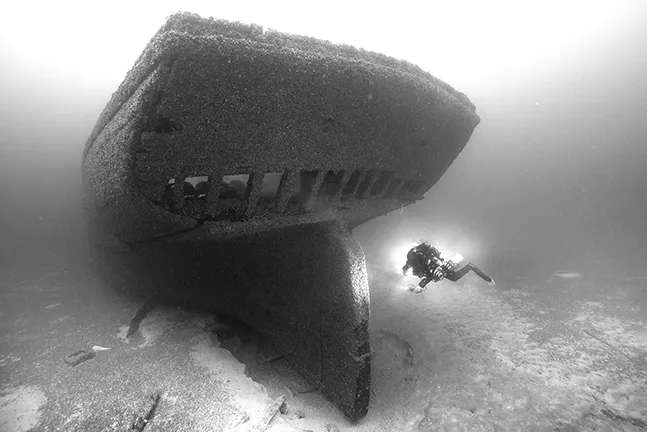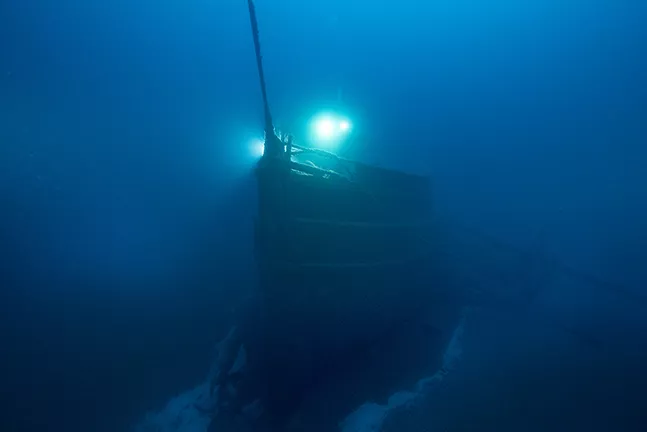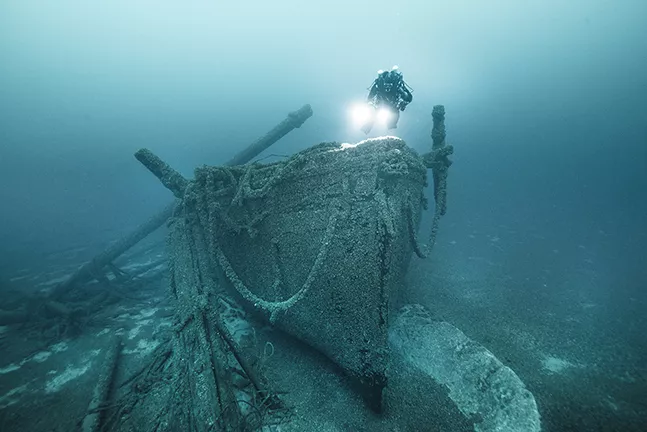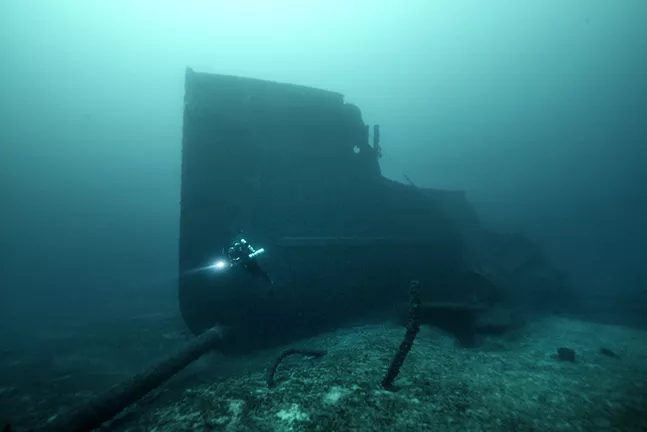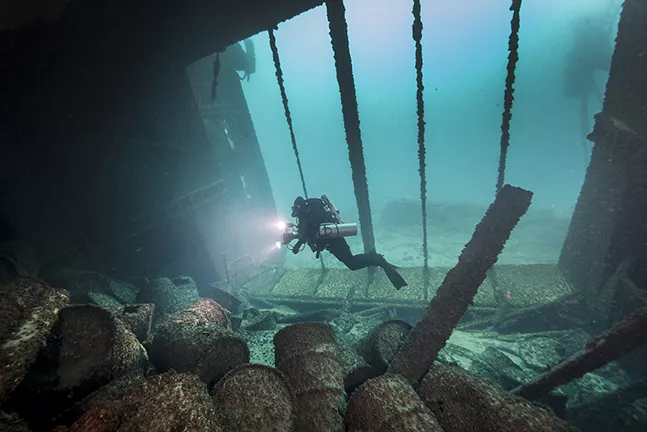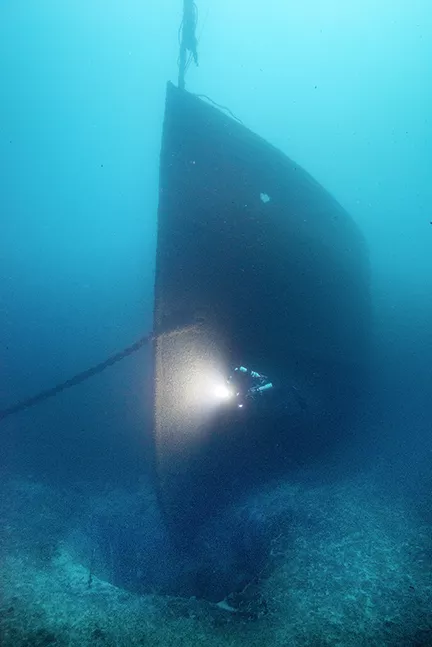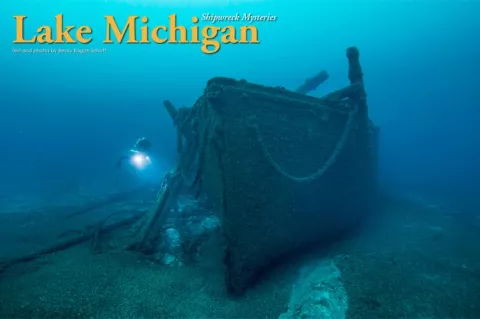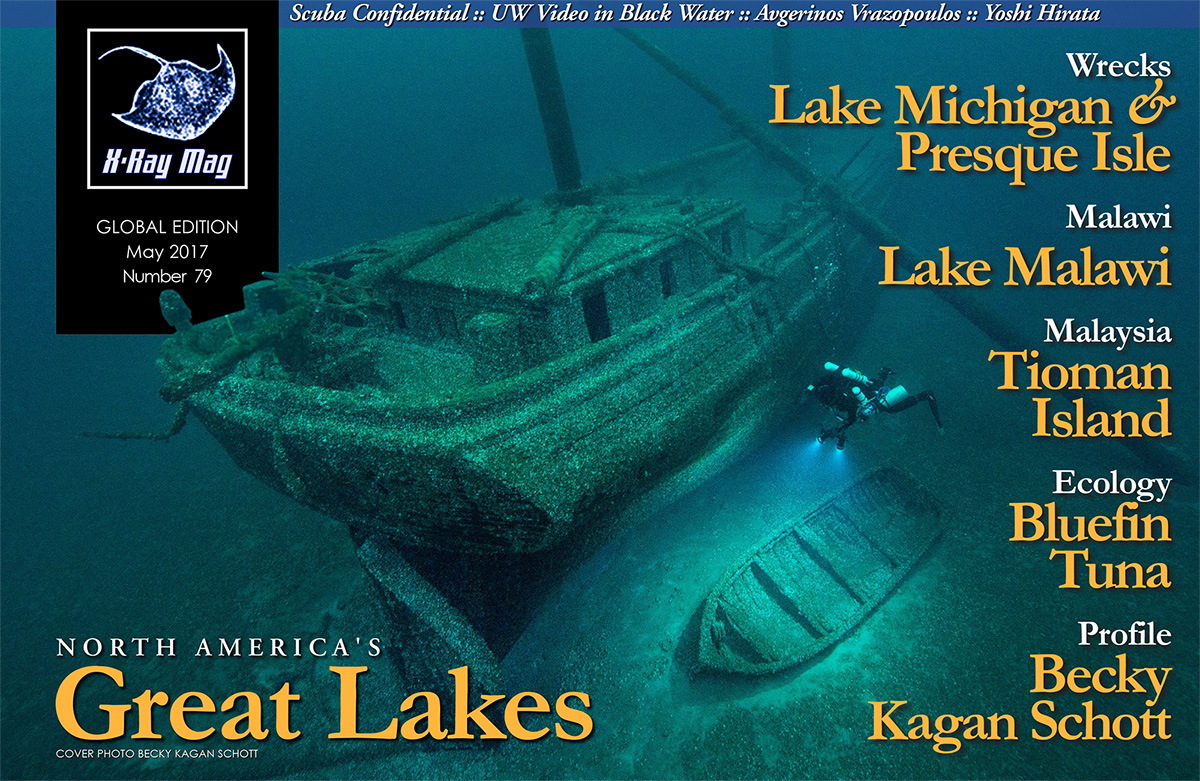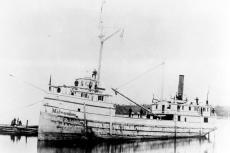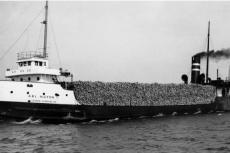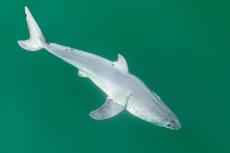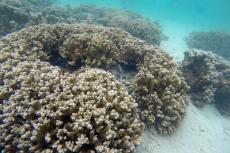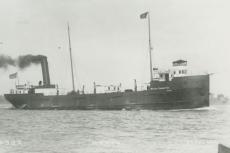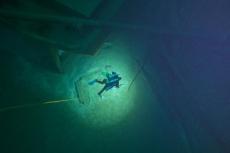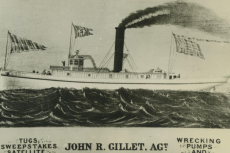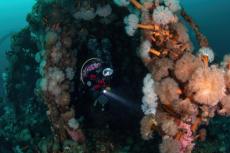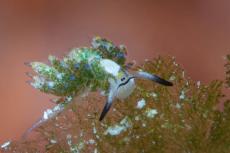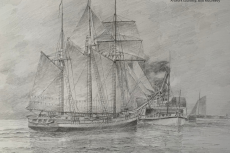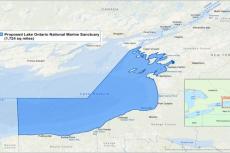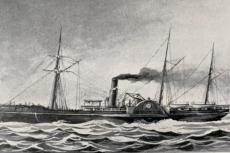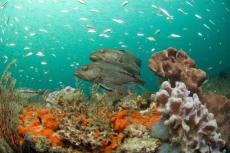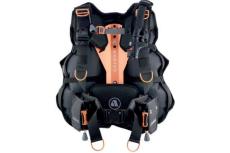My first dive in the Great Lakes was 20 years ago. I remember descending into dark green water and limited visibility. My joke for years was, “Do you know why they call it Lake Erie? Because it’s just that—it’s Erie.” Soon after that, I moved to Florida with my family and forgot all about the Great Lakes because I had warm, tropical reefs in my backyard. Fast-forward to five years ago and I had my next experience diving in Lake Superior. I was blown away by the wrecks, and it ignited a new passion for diving the Great Lakes.
Contributed by
Factfile
Becky Kagan Schott is an Emmy award winning underwater director of photography, photographer and technical diving instructor based in Pennsylvania, USA, whose work can be seen on major networks including National Geographic, Discovery Channel, and The Travel Channel.
For more information, visit: Liquidproductions.com or MegDiver.com.
REFERENCES:
http://thunderbay.noaa.gov/
http://www.shipwreckexplorers.com/
I was then fortunate enough to work on a documentary in Lake Huron where we located and explored several new wrecks. I was amazed by how blue and clear the water was.
The unfortunate introduction of invasive zebra mussels has improved the water clarity dramatically in many of the lakes. Unfortunately, they now cover the wrecks in four out of five of the Great Lakes, but visibility can now push 30m (100ft) or more. The water looks Caribbean blue on most days, and the lakes are no longer as dark and murky like they once were.
The Great Lakes have quickly become my personal favorite diving destination, with wrecks in recreational diving limits and beyond. After traveling to many of the world’s top wreck diving destinations, I believe that the Great Lakes are among them, and are home to some of the most incredible sites that do not require traveling half way around the world to a remote location to see.
Frozen in time
The wrecks here are really frozen in time and preserved in the cold, fresh water. Many of the wooden steamers and schooners have sat intact for over a century. These would no longer exist if they were in salt water. Instead, diving here is like turning back the hands of time and visiting a real-time capsule.
Here, you can see ships’ names still led-gabled on the sides of wrecks; look at cargo, including automobiles from the 1920s; see intact schooners with rigging and much more. I have made a half a dozen trips to various locations in the Great Lakes, with one of the most recent destinations in Milwaukee, Wisconsin.
When most people think about Milwaukee, they probably picture a bar on every corner, cheese and lots of American beer breweries. Milwaukee has all of these things, but it is also a wreck diving wonderland for those adventurous enough to take the plunge into Lake Michigan and immerse themselves in Milwaukee’s history.
Diving the wrecks
The dives range in depth from just 3m (10ft) of water to over 91m (300ft). A few of the popular recreational sites are the Prins Willem V, the SS Milwaukee, and the SS Wisconsin.
SS Milwaukee. My first wreck destination was the SS Milwaukee, which was a train car ferry. Fifty-two people lost their lives when the ship went down in a storm on 22 October 1929. It was carrying 27 railcars, lumber, bathtubs and food. It was reported that the railcars broke loose during the storm, crashing through the stern’s sea gate, allowing water to rush in and sink the ship. She went down just seven miles northeast Milwaukee, just three miles offshore in 36.5m (120ft) of water.
As you descend down the line, Milwaukee’s large re-enforced steel bow comes into view, standing upright on the bottom. It is an incredible sight to take in at first. About 46m (150ft) off of the port side of the ship lies the ship’s original wheelhouse, which was turned into the ship’s chart room—the word, Milwaukee, still visible on it, after 86 years sitting on the bottom of the lake.
Further down the ship, divers will see train railcar trucks and some of her cargo of Kohler sinks and bathtubs. Milwaukee has two massive propellers. One of the propeller shafts on the starboard side sits atop another train car truck that must have fallen out of the ship to the bottom, just before the ship sank on top of it. The U-shaped sea gate door on the back is bent and mangled, and reminds one of the violent end this ship experienced. Depths range from 27-36m(90-120ft) and visibility can be as much as 24m (80ft). It is a fantastic dive, with a lot to see and explore.
SS Wisconsin. The SS Wisconsin went down in a violent storm just one week after as the SS Milwaukee sank. The Wisconsin was a 65m (215ft) steel freighter that went down in a storm six miles off the coast of Kenosha 29 October 1929. The ship sank with nine crew including the captain.
At the wreck site, the ship’s superstructure is gone, with I-beams and supports still there. The wreck sits in 24-39m (90-130ft) of water. It was carrying a mixed cargo of automobiles, iron castings, and boxed freight such as shoes, and rugs. During the dive, one can see much of the cargo, including the three automobiles, a Hudson, Essex and Chevy model T. The cars sit just 4.5m (15ft) from a large opening outside of the wreck.
This is considered an advanced dive, and penetration should only be done by experienced divers. The stern and bow are very visual and make for great photography locations. The ship is large and difficult to swim around in one dive, so doing several dives on this site is recommended.
Prins Willem V. Next I visited the wreck of the Prins Willem V, one of the most visited wrecks in the area, which went down in a collision in October 1954. She collided with a barge called the Sinclair and floundered with a large gaping hole in her side.
The wreck now sits on its port side in 13-27m (45-90ft) of water about 6km (3.7mi) east of Milwaukee. The Milwaukee Coast Guard rescued her crew of 30. Unfortunately, when the ship went down, it also carried with it its cargo of TVs, automobile parts, machine parts, leather and hides.
There were attempts to raise the Prins Willem V several times but all failed. The wreck is intact and has large open hatches, with large barrels that were used in salvage attempts. There are a lot of open areas through which to swim as well as machinery to see.
Grace Channon. One of the wrecks in technical diving depths that I visited was the Grace Channon—a wooden schooner built in 1873 and sank in 1877 over 138 years ago when struck in a collision with another ship on her port side. The ship only took one life. But unfortunately, it was the life of the owner’s young son.
The wreck now sits upright in 55-61m (180-200ft) of water, with both masts broken. It is only 42.6m (140ft) long, so it is easy to swim around the entire schooner in one dive. The wreck is intact including the cabin, which is rare on schooners.
Because the water is so clear there is still ample ambient light at that depth. As you swim around the wreck, you will notice the collision damage on the starboard side, towards the bow. Visibility was over 30m (100ft) when I dived the wreck, allowing for excellent photography opportunities. It was incredible to see such preservation on a wooden wreck, over a century old.
Afterthoughts
There are hundreds of wrecks in this area, each with a story to tell—how they met their fate, ending up frozen in time at the bottom of Lake Michigan. These are truly incredible wrecks to see to catch a glimpse of US history and shipping on the Great Lakes.
There are still missing ships. With advances in diving, ROV and side scan technology, a few new wrecks are found each year. So, diving in Lake Michigan has a rich history, photogenic shipwrecks and so many to visit, it can keep you busy for years. ■

